This page is where you start when you’re not sure what to do when creating your: SELF MANAGED INSURANCE PLAN. This is your reference guide into learning how to be more self sufficient.
SMIP: A Proactive Survival Strategy A comprehensive approach to personal and family preparedness, encompassing skills, supplies, and plans to independently manage and mitigate risks associated with emergencies and disasters, ensuring self-reliance in the absence of external aid. -Buckhorn Cliffs

First off, what could happen and why should I prepare?
- Supply Chain Issues
- Stockpiling essential goods with a focus on non-perishable food, water, and medical supplies.
- Learning preservation techniques for food to extend shelf life.
- Stock long lasting chemicals for a multitude of uses.
- Developing skills in gardening and animal husbandry, and hunting for self-sufficiency.
- Civil Unrest
- Securing your home against potential break-ins or vandalism.
- Creating a plan for communication and rendezvous in case family members are separated.
- Power Outages
- Investing in alternative power sources like generators or solar panels.
- Understanding how to keep warm when it’s bitter cold outside.
- Keeping a stock of batteries, candles, and manual tools that don’t require electricity.
- Learning how to safely store and use fuel.
- War or Widespread Conflict
- Understanding basic first aid and trauma care.
- Staying informed about the situation through reliable sources.
- Job Loss or Economic Downturn
- Building an emergency fund to cover expenses for an extended period.
- Reducing expenses and practicing frugal living to extend financial resources.
- Electromagnetic Pulse (EMP) Event
- Protecting critical electronics with Faraday cages or other shielding methods.
- Preparing for the failure of most modern electronic devices and electrical grids.
- Having manual alternatives for essential tools and appliances.
- Developing communication plans that don’t rely on digital technology.
- Storing physical copies of important documents and information.
BUT FIRST:
I’ve created a PRINTABLE PDF for you to use as your Emergency Care Document. It’s designed to prepare individuals and families for a range of emergency situations, including cyber attacks, war, societal unrest, and natural disasters. It acts as a comprehensive guide, encompassing essential personal, medical, and contact information, alongside detailed plans for communication, evacuation, and emergency response. TAKE ME THERE

Developing Essential Skills
The importance of developing essential survival skills is paramount, especially considering potential scenarios like supply chain issues, civil unrest, power outages, war, and job loss. Invest in books that can be instrumental in acquiring and improving your skills.
Check out: From Tactical Training to Homesteading: Top Books for Self-Reliance

Strategies for Acquiring and Improving Survival Skills
- Learning from Experts: Books like the “U.S. Army Survival Manual: FM 21-76” and the “SAS Survival Handbook” offer field-tested techniques and expert advice for survival in extreme conditions.
- Practical Application: Engaging in hands-on activities such as gardening, as suggested in “The Encyclopedia of Country Living” and “The Vegetable Gardner’s Guide,” helps in learning and honing survival skills.
- Diverse Skill Set: The range of books recommended covers a wide array of skills from basic first aid (e.g., “Where There Is No Doctor”) to more advanced survival tactics found in “The Anarchist Cookbook.”
Importance of Documentation or Guides on Essential Survival Techniques
- Reliability in Crisis: In scenarios where digital access is compromised (due to EMP attacks, natural disasters, etc.), physical books provide reliable information that is always accessible.
- Comprehensive Knowledge Base: Books like “Back to Basics: A Complete Guide to Traditional Skills” serve as a comprehensive resource for a variety of survival skills, ensuring a well-rounded knowledge base.
- Adaptability to Various Scenarios: The blog emphasizes the need for adaptability in different crisis scenarios. Books covering a range of topics, from wilderness survival to home preservation, equip individuals to handle diverse challenges.
Water Storage and Filtration Plan
Having a reliable plan for water storage and filtration is an important aspect of emergency preparedness. This approach ensures access to clean water during various emergency scenarios. Here are some effective strategies and tools for managing water storage and purification.
Check out: Water Purification Methods

Water Storage and Safety
- Understanding Contamination Risks: It’s important to be aware of potential water contamination sources, such as microbial pathogens and chemical pollutants, especially in situations like natural disasters.
- Water Storage Solutions: Using food-grade containers for storing water is recommended. Regular testing and treatment of water, particularly for private well users, helps maintain water safety.
- Emergency Water Access: In events where the regular water supply is interrupted, having a backup plan for water access is essential. This includes using stored bottled water, filling available containers, and tapping into resources like water heaters.
Water Purification Techniques and Tools
- Traditional Purification Methods: Boiling, solar disinfection (SODIS), sedimentation, and homemade sand-charcoal filters are practical methods for purifying water in emergencies.
- Modern Purification Solutions: Portable water filters, chemical disinfectants, UV light pens, survival straws, and ceramic filters are useful tools for immediate water purification.
- Advanced Home Water Systems: For more comprehensive solutions, countertop gravity-fed systems, whole-house filtration, UV purification systems, and ozone purification technologies can be considered for home use.

DIY Bleach w/ Calcium Hypochlorite
Food Storage Strategies
Effective food storage is an important aspect of emergency preparedness. Stocking up on foods with a long shelf life and knowing how to efficiently utilize them can make a significant difference in managing unforeseen situations.
Check out:
- Food Storage Essentials for Emergency Preparedness (on Amazon)
- Survival Foods (Understanding Storage, Lifespan, & Risk)
- Long Lasting Sweeteners for Food Storage
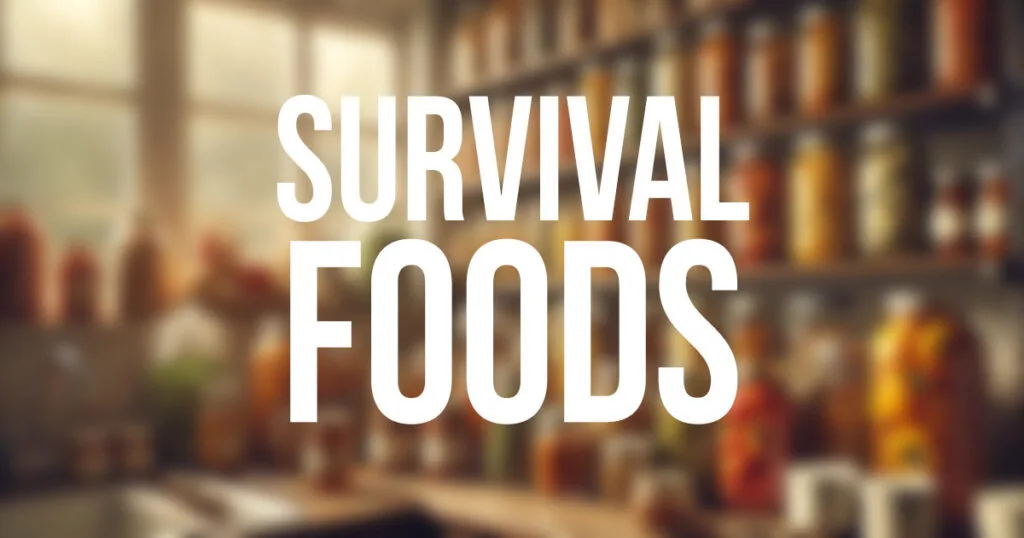
Tips for Stocking Foods with a Long Shelf Life
- Diverse Selection: Include a variety of non-perishable foods such as raw honey, salt, sardines, canned beef, sugar, honey powder, powdered milk, eggs, and butter. These items are chosen for their durability, shelf life, and versatility.
- Nutritional Value: Focus on items that provide essential nutrients. For example, sardines are high in protein and omega-3s, while powdered milk offers calcium.
- Storage Considerations: Ensure that the storage environment is suitable for these items, typically a cool, dry place. Use airtight containers to extend shelf life and protect against pests.
Recipes and Methods to Utilize Stored Food Efficiently
- Creative Cooking: Experiment with recipes that incorporate these stored ingredients. For instance, powdered eggs and milk can be used in baking, while canned meats and beans are great for hearty meals.
- Maximizing Resources: Learn to use ingredients in multiple ways. For example, honey can be a sweetener, a flavor enhancer, and even used for its medicinal properties.
- Meal Planning: Plan meals around the stored items you have. This not only ensures efficient use of your food supply but also helps in maintaining a balanced diet.
Cooking Without Electricity
In emergency scenarios, the ability to cook without relying on electricity is essential. Propane is a versatile and reliable resource for such situations, but it’s also important to consider alternative methods like wood-burning stoves or cooking with fire.
Check out: Propane Tools for Emergency Scenarios

Importance of Stocking Up on Propane
- Reliability: Propane is a dependable fuel source that can be used for cooking, heating, and even powering refrigerators and freezers in emergencies.
- Long Shelf Life: Unlike gasoline or diesel, propane does not degrade over time, making it ideal for long-term storage.
- Versatility: Propane can power a variety of appliances, including stoves and grills, making it a flexible option for different cooking needs.
Guide to Choosing and Using a Propane Cooktop
- Selecting the Right Size: Choose a propane cooktop that fits your space and meets your cooking needs. Portable units are great for small spaces or outdoor use.
- Safety First: Ensure proper ventilation when using propane indoors and always follow manufacturer guidelines for safe operation. Always have a carbon monoxide detector in the room.
- Fuel Efficiency: Consider the energy content of propane and use it efficiently to conserve your supply during prolonged emergencies.
Wood-Burning Stoves and Cooking with Fire
Check out: Wood Stove Installation DIY Guide

- Wood-Burning Stoves: These are excellent for heating and cooking, especially in off-grid scenarios or when propane is not available. They require a steady supply of wood, so it’s important to have a stockpile or access to firewood.
- Cooking Over an Open Fire: This traditional method can be effective in outdoor settings. It requires basic skills in fire-building and cooking over flames, which can be a valuable addition to your survival skills.
- Safety and Preparation: Always prioritize safety when dealing with open flames. Have fire extinguishing methods on hand and ensure you are cooking in a safe, controlled environment.
Chemical Storage for Household Needs
Maintaining a stock of long-lasting chemicals for household needs is an important aspect of emergency preparedness. These chemicals serve various purposes, from cleaning and disinfection to water purification and first aid.
Check out: Long-Lasting Chemicals for Emergency Preparedness & Home Supply

List of Long-Lasting Chemicals Essential for Daily Household Needs
- Potassium Permanganate: Useful for water purification, wound disinfection, and as an emergency fire starter. It has an indefinite shelf life when stored dry in a sealed container.
- Baking Soda (Sodium Bicarbonate): A versatile compound for baking, cleaning, deodorizing, and personal hygiene. It also has an indefinite shelf life if kept in a cool, dry place in a sealed container.
- Vinegar (Acetic Acid): Ideal for cooking, cleaning, and as a mild disinfectant. Vinegar can last indefinitely when stored in a sealed container in a cool, dark place.
- Activated Charcoal: Used for water filtration, air purification, and skin care, with an indefinite shelf life in airtight conditions.
- Boric Acid: Effective for pest control, antiseptic treatments, and as a preservative, with an indefinite shelf life in a sealed container away from moisture.
- Iodine: Used for water purification, wound care, and as a skin disinfectant. In crystal form, it can last indefinitely if stored properly.
- Glycerin: Has various medical and skincare applications and an indefinite shelf life when stored in a cool, dark place.
- Calcium Hypochlorite: Useful for water purification with a shelf life of up to 10 years in a cool, dry, and dark environment.
- Sulfur Powder and Saltpeter (Potassium Nitrate): Both have indefinite shelf lives and various applications, including in gardening and pest control.
Safe Storage and Usage Practices for These Chemicals
- Airtight Containers: Store chemicals in airtight containers to prevent exposure to air and moisture, which can lead to degradation.
- Cool and Dry Storage: Keep the storage area cool and dry, as humidity and temperature fluctuations can affect the stability of many chemicals.
- Separate Storage: Store reactive or potentially hazardous chemicals away from other substances to prevent unwanted reactions.
- Safety Precautions: Handle chemicals with care, using gloves and eye protection, and keep them out of reach of children and pets.
- Proper Labeling: Clearly label all containers with the contents and date of storage for easy identification and tracking of shelf life.
Home Protection & Hunting Tools
Creating a comprehensive rifle setup is essential for hunting. A well-thought-out selection of firearms, including both hunting rifles and handheld firearms, ensures preparedness for various scenarios.
Check out: Build the Complete Rifle Setup: Small and Large Game on a Budget

And: Emergency Essentials: Preparing Your Home for the Unpredictable
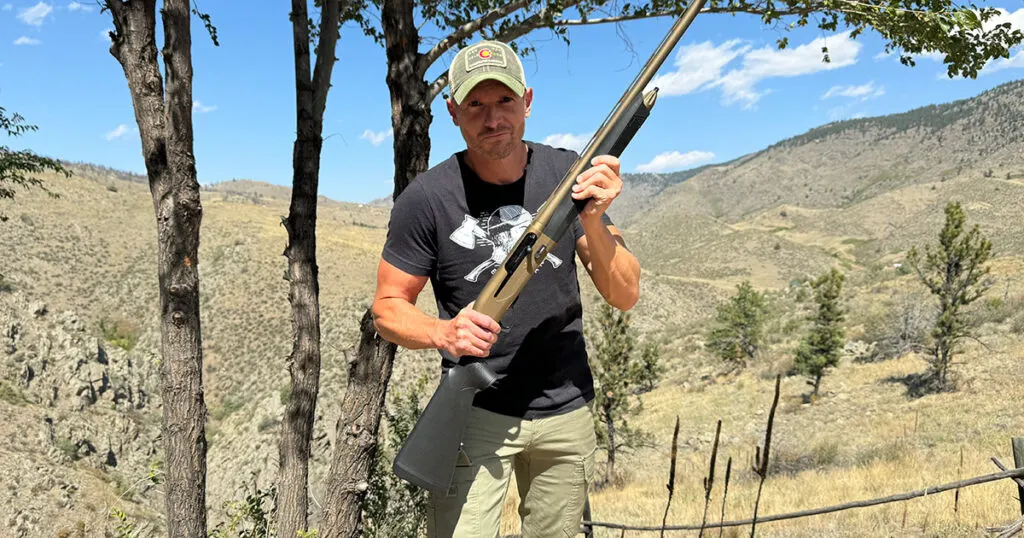
Check it out: Retay Masai Mara 12 Gauge Shotgun Review
Complete Rifle Setup for Hunting
- Rifle Choices: For hunting, two versatile and cost-effective rifles are recommended: the .308 Winchester for larger game due to its range and stopping power, and the .22 Long Rifle for small game, offering accuracy and affordability.
- Scope Selection: For the .308 Winchester, a scope is almost indispensable to enhance accuracy for long-range shots. The .22 Long Rifle, used for closer range shooting, may not always require a scope, but it can be beneficial for precision.
- Protective Case: Protecting your investment with a sturdy case like the Pelican V800 Vault Double Rifle Case is crucial. It provides a safe and secure environment for the rifles, protecting them from external elements and making transportation easier.
Handheld Firearms for Personal Protection
- Selection Criteria: When choosing a handheld firearm for personal protection, consider factors like ease of use, reliability, caliber, and comfort in handling. Popular choices often include 9mm pistols or revolvers due to their manageable size and effective defensive capabilities.
- Training and Familiarity: Regular training and familiarity with the firearm are key. This ensures readiness and confidence in handling the weapon safely and effectively in a defensive situation.
Safe Storage and Maintenance
- Secure Storage: Firearms should be stored securely, preferably in a locked safe or cabinet, to prevent unauthorized access, especially by children.
- Regular Maintenance: Regular cleaning and maintenance of both hunting rifles and handheld firearms are essential to keep them in good working condition and to ensure reliability when they are needed.
Physical Fitness and Health
Physical fitness and health play a pivotal role in survival situations. Being physically fit not only enhances your ability to handle physically demanding tasks but also improves mental resilience, both of which are crucial in challenging scenarios.
The Role of Physical Fitness and Health in Survival
- Endurance and Stamina: Good physical fitness increases your endurance and stamina, enabling you to perform necessary tasks like walking long distances, carrying supplies, or handling manual labor for extended periods.
- Agility and Quick Response: Being agile helps in navigating through difficult terrains and reacting swiftly to sudden changes or threats in a survival situation.
- Mental Resilience: Regular exercise and good health contribute to mental well-being, which is essential for staying focused, making sound decisions, and maintaining a positive attitude in stressful circumstances.
Tips for Building Agility and Strength
- Regular Exercise: Incorporate a mix of cardiovascular exercises, strength training, and flexibility workouts into your routine.
- Functional Fitness: Focus on functional fitness exercises that mimic real-life movements and scenarios. This includes exercises like squats, lunges, push-ups, and plyometrics that improve overall body strength and agility.
- Consistency: Consistency is key in building and maintaining fitness. Aim for regular workouts, gradually increasing intensity and duration to continuously challenge your body.
Long-Term Benefits of Physical Fitness and Health
- Improved Health: Regular physical activity reduces the risk of chronic diseases, improves heart health, and enhances overall physical and mental well-being.
- Increased Lifespan: Staying physically active can contribute to a longer, healthier life.
- Enhanced Quality of Life: Good fitness levels improve the quality of life, making daily tasks easier and more enjoyable.
- Preparedness for Emergencies: Being in good physical shape ensures you are better prepared to handle the demands of emergency situations, whether it involves fleeing danger, aiding others, or enduring prolonged physical challenges.
Building a Community of Like-Minded Individuals
Forming a community of like-minded individuals is a strategic approach to enhancing preparedness and resilience in various scenarios. The collective strength, shared knowledge, and diverse skill sets of a community can significantly improve the chances of thriving in challenging situations.
The Power of Numbers: Forming Relationships with Shared Preparedness Goals
- Shared Knowledge and Experience: A community brings together individuals with diverse experiences and knowledge, allowing members to learn from each other.
- Resource Pooling: In a community, resources can be pooled together, ensuring better preparedness and access to a wider range of supplies and equipment.
- Emotional and Psychological Support: Having a support system in place can be good for maintaining morale and mental health during tough times.
- Increased Safety and Security: There is safety in numbers. A community can organize more effective watch systems and defense strategies, providing enhanced security for all members.
Complementing Each Other’s Skill Sets in a Survival Scenario
- Identify Individual Strengths and Skills: Assess the unique skills and strengths of each community member. This could range from medical knowledge to mechanical skills, from gardening expertise to tactical defense abilities.
- Organize Training and Skill-Sharing Sessions: Regularly organize workshops or training sessions where members can teach and learn from each other. This not only enhances individual skills but also fosters a sense of unity and teamwork.
- Develop a Plan for Different Scenarios: Collaboratively create plans for various potential scenarios, ensuring that each member’s skills are effectively utilized. This could include emergency evacuation plans, food storage strategies, or first-aid response systems.
- Encourage Cross-Training: Encourage members to learn basic skills in various disciplines to ensure redundancy and versatility within the group. This way, the community is not overly reliant on any single individual.
- Foster Strong Communication: Establish clear and effective communication channels within the community. This ensures that everyone is informed, coordinated, and able to respond promptly in emergencies.
First Aid and Medical Preparedness
Being prepared with basic first aid skills and a comprehensive medical kit is essential for handling medical emergencies effectively. This preparedness is crucial not only for personal safety but also for providing assistance in various scenarios.
Check out:
- Elevate Your Preparedness: Building a High-Quality Personal Medical Kit
- Emergency Preparedness Kit: Comprehensive Medical Care
- Book Recommendations
Click on any of the images below to view more.
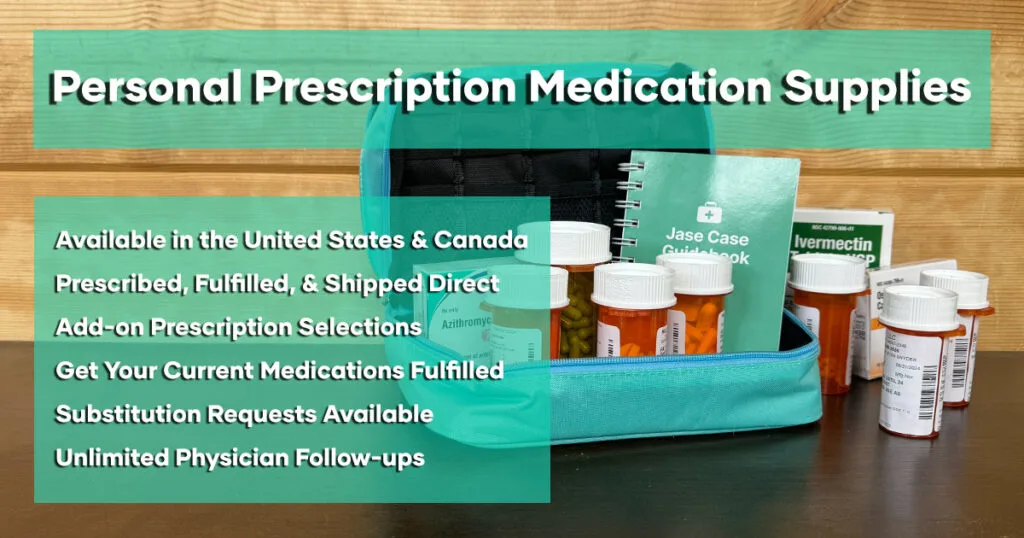

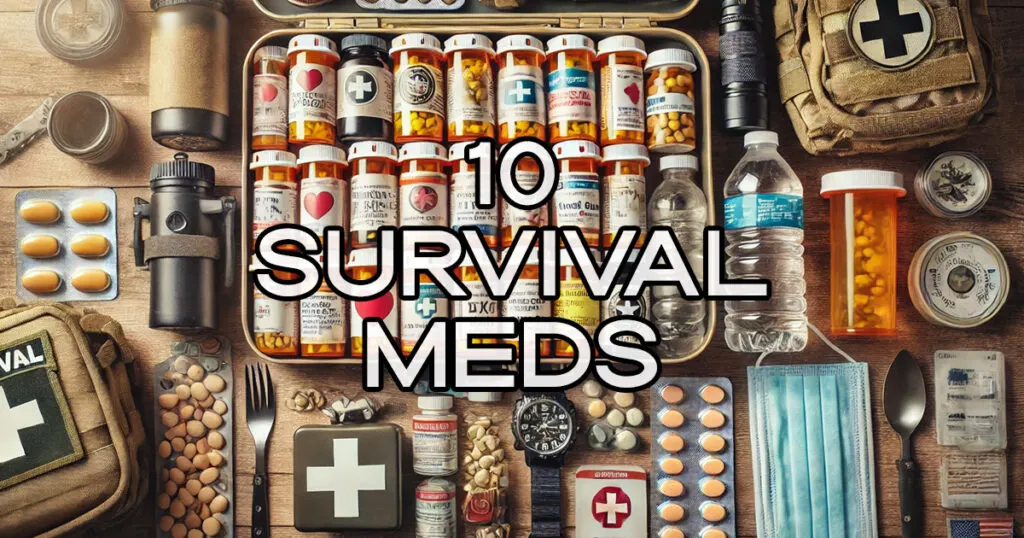
Basic First Aid Skills and Knowledge
- Understanding Basic Procedures: Familiarize yourself with basic first aid procedures, such as CPR, wound care, and managing sprains or fractures.
- Recognizing Symptoms: Learn to recognize the symptoms of common medical issues like allergic reactions, heatstroke, hypothermia, and dehydration.
- Regular Training: Engage in regular first aid training sessions to keep your skills sharp and up-to-date.
Creating a Comprehensive First Aid Kit
- Essential Items: Your kit should include items like bandages, antiseptic wipes, gauze, adhesive tape, scissors, tweezers, and gloves. Also, consider adding pain relievers, antihistamines, and antibiotic ointment.
- Specialized Equipment: Include specialized items such as a tourniquet, splints, and thermal blankets. Products like QuikClot gauze for bleeding control and electrolyte packets for dehydration can be lifesavers.
- Customization: Tailor your kit to meet the specific needs of your family or group, considering any unique medical conditions or requirements.
Understanding and Managing Common Medical Emergencies
- Assessment Skills: Learn how to assess a person’s condition quickly and effectively. This includes checking for responsiveness, breathing, and any visible injuries.
- Handling Trauma: Know how to handle traumatic injuries, such as severe bleeding, broken bones, or burns.
- Managing Chronic Conditions: Be aware of how to manage common chronic conditions in emergency scenarios, such as diabetes or heart disease.
Importance of a Quality Medical Kit
- Durability and Accessibility: Choose a durable and easily accessible medical kit, like the Pelican Vault Case, to protect and organize your supplies.
- Portability: Consider the portability of your kit, especially if you’re often on the move or engaging in outdoor activities.
Emergency Communication Plans
Effective communication is important during emergencies. Having a well-thought-out emergency communication plan ensures that you can stay in touch with family members, friends, or group members during crises, regardless of the situation.
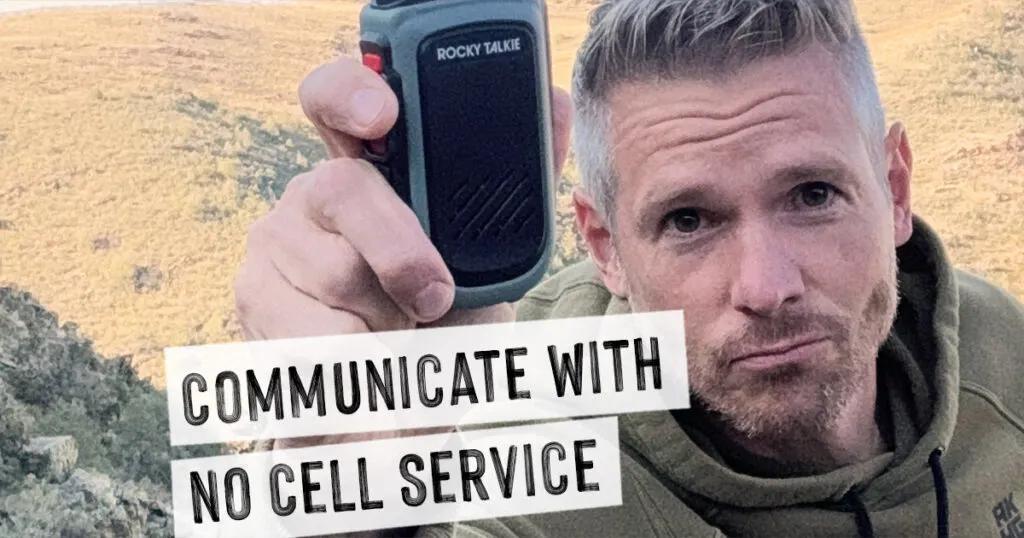
Strategies for Staying in Touch During a Crisis
- Diverse Communication Tools: Utilize a variety of communication tools.
- Radios for Local Communication: Handheld radios (like walkie-talkies) are ideal for local communication, especially when cell phone networks are down or overloaded.
- Satellite Phones for Remote Areas: In remote areas or when cellular networks are unavailable, satellite phones can provide a reliable means of communication.
- Emergency Alert Systems: Stay informed through emergency alert systems that provide critical information via radio, TV, or smartphones.
Establishing a Family or Group Communication Plan
- Designate a Primary Contact: Choose a primary contact person outside your immediate area who can coordinate communication among family members.
- Share Contact Information: Ensure every family or group member has a list of important contact numbers, including emergency services, the primary contact person, and each other.
- Plan for Different Scenarios: Develop communication plans for different scenarios, such as what to do if you’re at home, work, school, or separated.
- Regular Drills and Updates: Conduct regular drills to practice your communication plan and keep it updated with current information and technology.
- Backup Power Sources: Have backup power sources like extra batteries or solar chargers to keep communication devices operational.
Additional Considerations
- Texting Over Calling: In situations where networks are congested, text messages may be more reliable than voice calls.
- Use of Social Media: Utilize social media platforms, which can be effective for broadcasting information to a wide audience or checking in with loved ones.
- Physical Meeting Points: Establish physical meeting points in case communication networks are completely down.
More coming soon:
Power Alternatives and Energy Storage

- Options for alternative power sources (solar panels, generators).
- Battery storage solutions and usage tips.
Gardening and Food Production
- Basics of starting a survival garden.
- Preserving and storing home-grown produce.
DIY Repair and Maintenance Skills
- Basic repair skills for common household and survival equipment.
- Maintaining tools and equipment for long-term use.
Wilderness Survival Skills
- Techniques for surviving in the wilderness (shelter building, fire starting).
- Identifying edible plants and basic hunting/trapping skills.
Personal and Home Security Measures
- Strategies for securing your home against intruders.
- Personal safety tips in the context of societal unrest or danger.
Resource Management and Rationing
- Effective management and rationing of food, water, and other resources.
- Planning for long-term sustainability in a crisis.
pin this


Michaela
Wednesday 3rd of September 2025
Díky
Troy
Tuesday 20th of August 2024
This is a really great overall foundation to build from. As we have always been told, knowledge is power and in this give a great starting point for everyone from newer preppers to those who have been working on it for a while. Thank you for providing this
Rob Benson
Tuesday 20th of August 2024
You're welcome! Thanks for your kindness.
Ben T
Wednesday 3rd of April 2024
Just getting into the prepper space, thanks for the tips.
Rob Benson
Friday 5th of April 2024
Welcome!